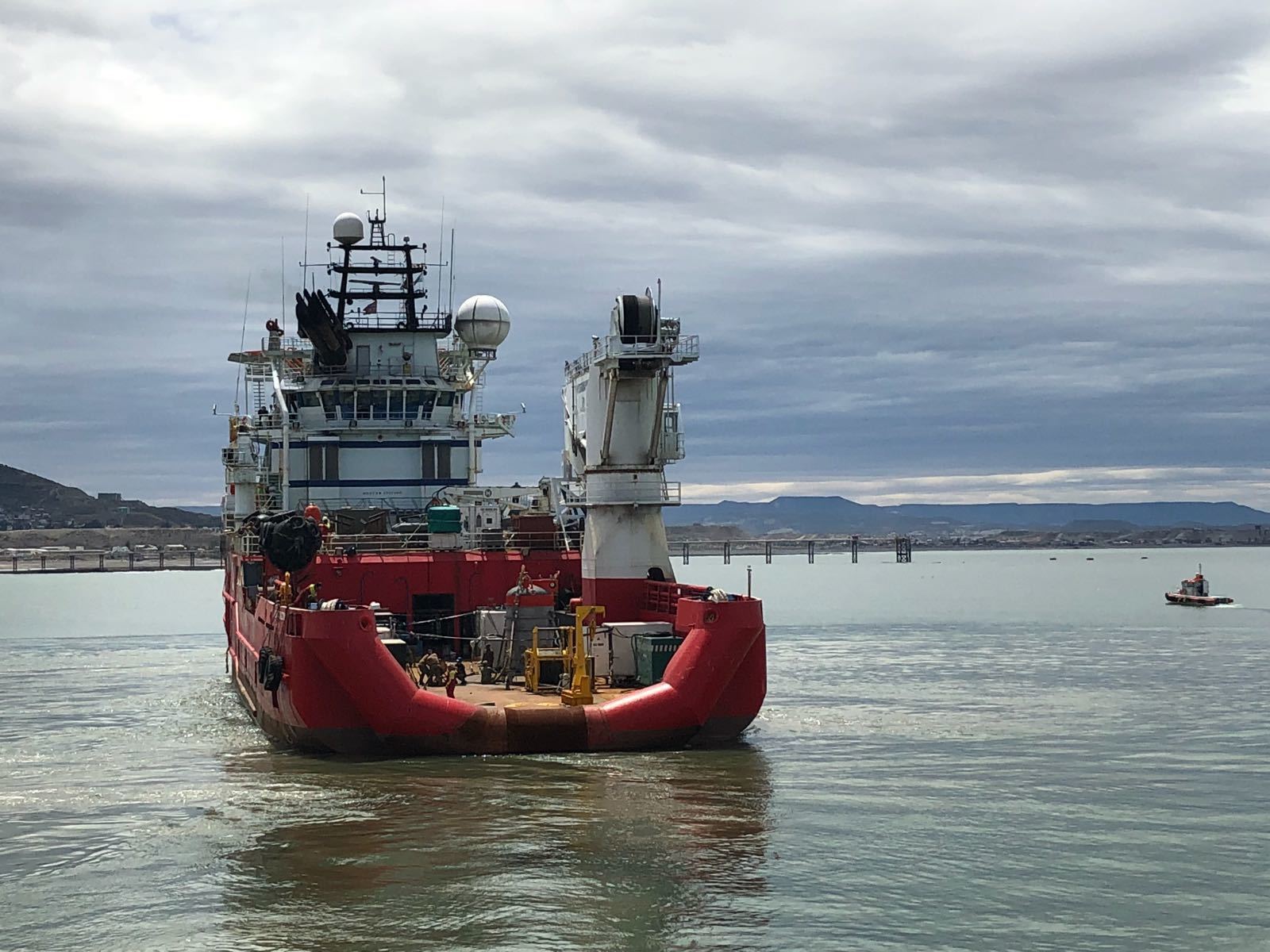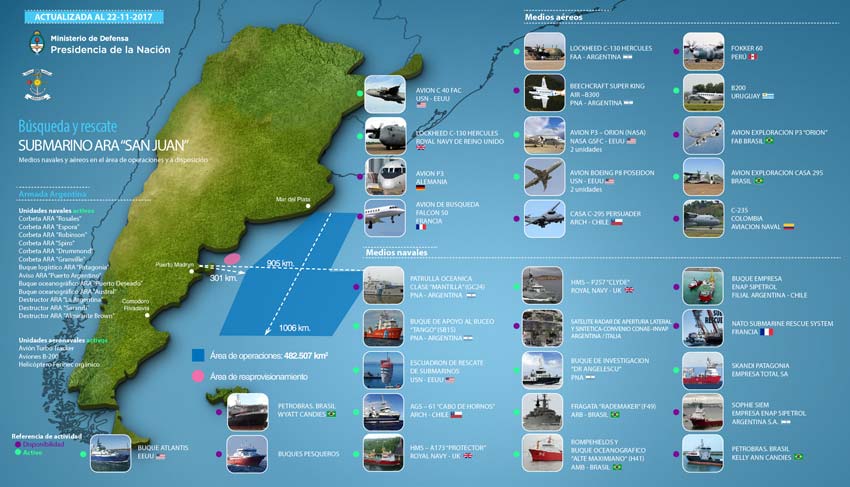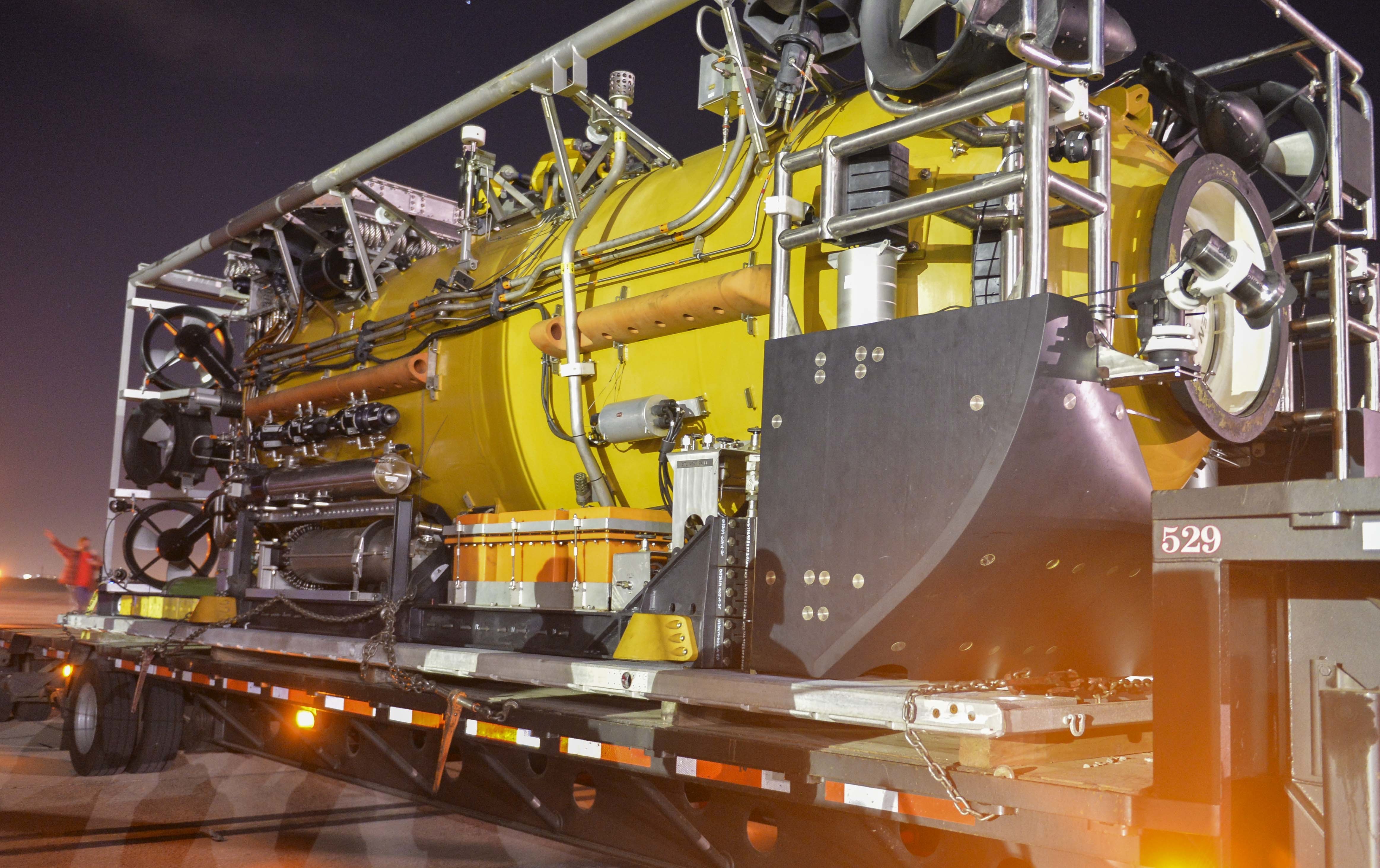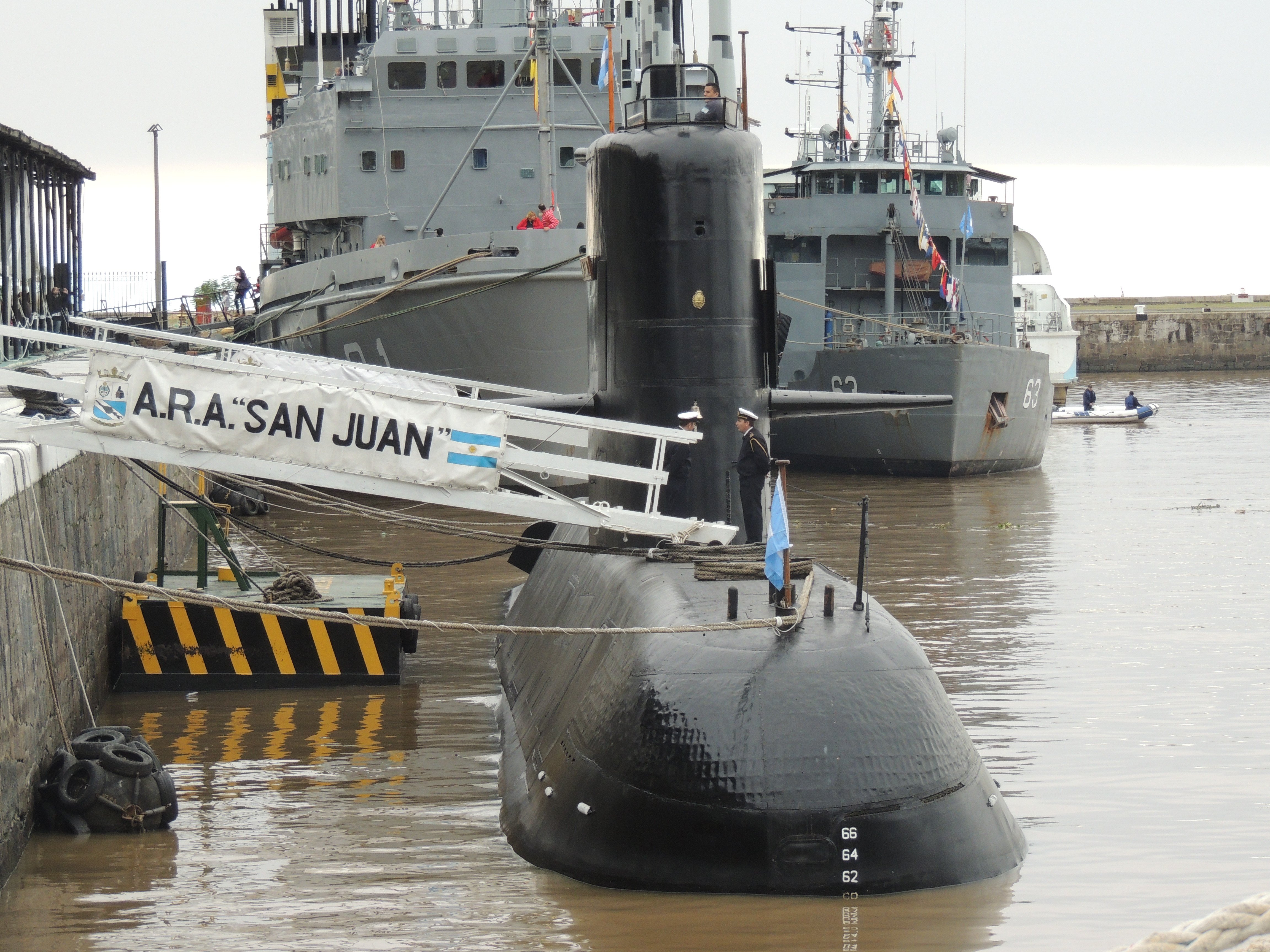
The U.S. Navy’s undersea search and rescue teams left port on Wednesday to assist the ongoing international effort searching for a missing Argentine Navy submarine.
More than a week has passed since the last communication was received from the missing diesel-electric attack boat ARA San Juan, thought to be off the coast of Argentina.
U.S. Navy personnel and equipment aboard the commercial ship Skandi Patagonia left port Wednesday, according to a statement released by the Argentine Navy.
Skandi Patagonia is a large construction support ship operated by the Norwegian oil and gas exploration servicing firm DOF Group. DOF has a Brazil-based fleet among its global operations, according to the company’s website.
 Additional U.S. Navy search and undersea rescue teams and equipment were preparing to depart Wednesday on Sophie Siem, a commercial ship operated by the Norwegian oil and gas exploration firm Siem Offshore, according to a statement released by the Argentine Navy.
Additional U.S. Navy search and undersea rescue teams and equipment were preparing to depart Wednesday on Sophie Siem, a commercial ship operated by the Norwegian oil and gas exploration firm Siem Offshore, according to a statement released by the Argentine Navy.
The U.S. Navy search equipment includes four unmanned vehicles to scour underwater for clues to missing sub’s location. The recently established Unmanned Undersea Vehicle Squadron 1, based in Pearl Harbor, Hawaii, brought to Argentina one Bluefin-12D (Deep) unmanned undersea vehicle (UUV) and three Iver 580 UUVs.
If located, the U.S. Navy’s Undersea Rescue Command is now in Argentina. Depending on a variety of factors, the command has a couple of vehicles to use to rescue crew members – a Submarine Rescue Chamber (SRC) or a Pressurized Rescue Module (PRM).

The SRC is a McCann bell based on designs dating to the 1930s but still used today. It is operated by two crew members and can rescue up to six people at a time, according to the Navy. The SRC is lowered using a tethered cable from a mother ship and can reach submarines submerged 850 feet below the surface. Once the chamber reaches the submarine, it seals over the submarine’s hatch allowing sailors to safely exit the sub and enter the chamber.
The PRM is operated remotely by a crew on a ship. It can descend to 2,000 feet and can carry up to 18 people, including two attendants, according to the Navy. Along with being able to hold more people and dive deeper, a key feature of the PRM is its transfer skirt – used to connect the module to the submarine – can rotate to a 45-degree angle. The PRM can remain upright even if the submarine is resting at an angle which eases the rescue process.

Poor weather and rough seas have hampered the search efforts so far. Wednesday’s weather was better, according to a statement released by the Argentine Navy.
The international search so far has used a combination of ships, aircraft, and unmanned undersea vehicles to find the sub. So far, several sonar and thermal imaging hits have turned out to not to be the sub. The urgency of the search has increased as officials worry the crew of San Juan could soon be out of oxygen.

San Juan is a German-built TR-1700 attack sub, launched in 1983, but completed a multi-year mid-life overhaul in 2014, according to a statement released by shipyard performing the work. Repairs were made to San Juan’s propulsion batteries, diesel engines, and propulsion generators. New battery computers were installed, along with new periscopes, radar, and communications equipment. According to news reports at the time, the engine work required cutting San Juan in half.





